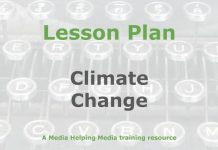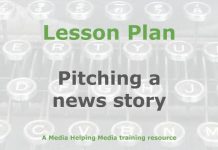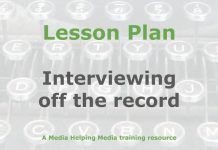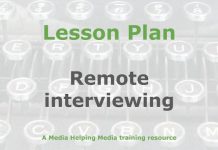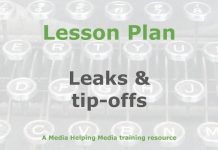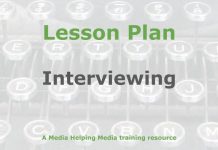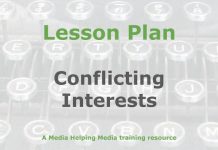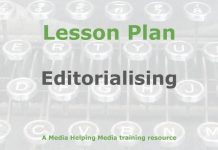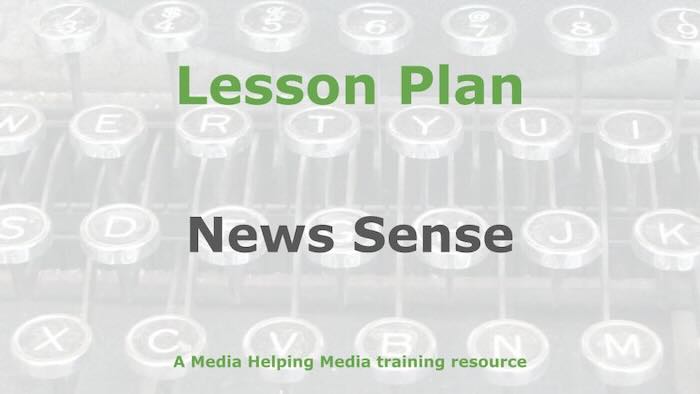 Some journalist have a natural news sense; they just know a good news story when they see it, but for others they have to develop the skill.
Some journalist have a natural news sense; they just know a good news story when they see it, but for others they have to develop the skill.
This lesson plan is based on the article ‘Developing and applying a news sense‘ which is published on Media Helping Media and which we recommend you read before developing this story plan for your own purposes.
For any journalist starting out, the fundamental, non-negotiable task is learning to spot, verify, and tell a good story. While some people seem to have a natural ‘nose for news,’ news sense is a skill that can – and must – be developed.
This lesson provides you with a definitive, 13-point guide to mastering this skill. We won’t just look at whether an event is interesting; we’ll drill down into the questions that separate gossip from genuine journalism.
You’ll learn to evaluate a story’s newsworthiness, its veracity, its coherence, and its adherence to essential ethical and accuracy standards.
By the end of the day, you won’t just know what makes a news story; you’ll have a practical, professional checklist to determine how to approach reporting and writing it, ensuring your work is always credible, complete, and engaging for your audience. Let’s begin by asking: What exactly is news?
Lesson outline: The 13 essential questions of news sense
Lesson objectives
- Overall objective: Students will master the fundamental qualities of a news story and apply a comprehensive 13-point checklist to evaluate and approach story development.
- Student-facing objective: By the end of this lesson, the student will be able to identify, evaluate, and structure a potential news story by answering the 13 essential questions every journalist must ask.
Timetable and activities
The one-day training is structured around approximately six hours of instruction, including breaks:
- 09:00–09:30: Warm-up – The newsworthy scan. Students check headlines against the core verification questions (Q1–Q3).
- 09:30–10:45: Direct instruction I – The core and the substance. Focus on Identifying & Verifying (Q1–Q3) and Developing the Story Content (Q4–Q7).
- 10:45–11:00: Break
- 11:00–12:30: Guided practice – 13-point vetting. Students apply the full checklist to a complex scenario, formulating a reporting plan.
- 12:30–13:30: Lunch.
- 13:30–14:45: Direct instruction II – The craft and the professional. Focus on Writing and Structure (Q8–Q10) and Ethical and Accuracy Standards (Q11–Q13).
- 14:45–15:00: Break.
- 15:00–16:00: Independent practice – The editor’s justification. Students write a memo justifying a decision on a story, referencing at least five of the questions.
- 16:00–16:30: Assignment & wrap-up. Reflection and Q&A session.
Direct instruction: The 13 essential questions
The lesson content is based on answering these questions, which define the essential qualities of a story and the approach to writing it.
Identifying & verifying the news (The core)
Q1: Is it new? (If it’s not new, it’s not news.)
Q2: Is it true? (Something can only be news if it is true.)
Q3: Can you prove it? (You must be able to demonstrate that it is true.)
Developing the story content (The substance)
Q4: Is it interesting? (If you can’t make it interesting, it’s not a story.)
Q5: Can you find all the necessary facts? (The story must be coherent and understandable.)
Q6: Can you find examples to illustrate the story? (Examples bring the story to life.)
Q7: Can you explain the context? (The background gives the story depth and extra meaning.)
Writing and structure (The craft)
Q8: Can you write a first sentence that will capture the interest of the audience and make them want to read more? (The lede is the most important sentence.)
Q9: Can you write a story that flows naturally? (A good story flows smoothly.)
Q10: Can you avoid raising questions that you can’t answer? (The story must be self-contained.)
Ethical and accuracy standards (The professional)
Q11: Can you avoid taking sides? (Present facts without bias.)
Q12: Can you be fair to everyone in the gathering and writing of the story? (This is essential for earning audience trust.)
Q13: Are you absolutely, 100 per cent sure that everything you have written is correct in every respect? (Accuracy is the first requirement.)
Assignment
- Identify the most challenging of the 13 questions for journalists today.
- Explain how fairness (Q12) and lack of bias (Q11) build audience trust.
- Rewrite an existing headline/lede to maximise impact, applying the principle of Question 8.
Relevant links
The following articles provide essential background and supplementary information for the lesson:
- What is news?
- News writing tips for beginners
- Developing and applying news sense
- Essential elements of a news story
Conclusion: Becoming the gatekeeper of news
We’ve spent this day breaking down the art of news sense into 13 measurable and actionable questions. You’ve moved beyond the vague idea of ‘spotting a good story’ to embracing a professional checklist that governs every stage of the journalistic process – from the initial tip-off to the final fact-check.
The most critical takeaway is this: Journalism isn’t just about sharing information; it’s about being the gatekeeper of quality, accuracy, and fairness. By rigorously applying these 13 essential questions, you are not simply writing a story; you are building the foundation of public trust. The ability to prove your claims (Q3), provide essential context (Q7), and maintain absolute fairness (Q12) is what distinguishes a professional journalist from an amateur content creator.
As you step away from this lesson and back into the field, carry this checklist with you. Use it as your compass for every decision, ensuring your work always flows and stands up to scrutiny.
Key Takeaways
The core principles
- Accuracy is paramount (Q13): Never compromise on accuracy. You must be 100 per cent sure that everything you’ve written is correct in every respect.
- Proof is essential (Q3): It’s not enough for something to be true; you must be able to prove it and demonstrate its truth to the audience.
- Context gives meaning (Q7): A story without background or context lacks depth. Always explain why this matters by setting out the bigger picture.
Writing and ethics
- The lede is your hook (Q8): The first sentence is the most important; craft it for maximum impact to make the audience want to read on.
- Flow ensures readership (Q9): A good story must flow naturally without sticking in the craw.
- Fairness builds trust (Q11 & Q12): Good journalism requires presenting facts without bias and being fair to everyone involved. This is the only way to earn and maintain the audience’s trust.
The Journalist’s mindset
- Your news sense is a muscle. Use the 13-question checklist daily to train your instincts, turning these principles into second nature.
Related article
